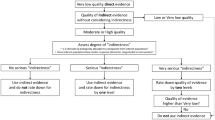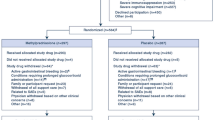Abstract
Purpose
Zymosan-induced generalized inflammation is the only experimental model that reproduces characteristics of human multiple organ dysfunction syndrome (MODS). Toll-like receptors (TLRs) are key components in innate immune responses and their signaling pathway is known to activate target genes such as nuclear factor-κB (NF-κB) and cytokines that are involved in inflammation and immune responses. We previously reported that hyperbaric oxygen (HBO) therapy is effective in the treatment of severe zymosan-induced inflammation in MODS. The aim of this study was to investigate the effect of HBO exposure on TLR2 and TLR4 signal transduction and organ dysfunction during MODS induced by zymosan in the rat.
Methods
Male Wistar rats were randomized into four groups and treated as follows: (1) saline solution (control); (2) zymosan; (3) HBO 4 and 11 h after zymosan injection; (4) HBO 4 and 11 h after saline solution injection. Zymosan-induced damage of the lungs, liver, and small intestine was evaluated using histology and biochemistry. The activation of the TLR signaling pathway was measured with Western blot, reverse transcriptase polymerase chain reaction analysis (RT-PCR), and immunohistochemistry.
Results
Zymosan induced a severe inflammatory response characterized by the activation of the TLR signaling pathway and by an organ dysfunction. HBO exposure significantly reduced the development of lung, liver, and intestine injury in our experimental model. It also significantly reduced the zymosan-induced expression of TLR2 and TLR4, NF-κB activation, and cytokine production.
Conclusions
Taken together, these results suggest that, by interfering with the TLR pathway, HBO treatment may exert a protective effect against tissue injury caused by zymosan-induced generalized inflammation.





Similar content being viewed by others
Change history
14 February 2024
An Editorial Expression of Concern to this paper has been published: https://doi.org/10.1007/s00134-024-07340-8
References
Shayevitz JR, Miller C, Johnson KJ, Rodriguez JL (1995) Multiple organ dysfunction syndrome: end organ and systemic inflammatory response in a mouse model of nonseptic origin. Shock 4:389–396
Goris RJ, Boekholtz WK, van Bebber IP, Nuytinck JK, Schillings PH (1986) Multiple-organ failure and sepsis without bacteria. An experimental model. Arch Surg 121:897–901
Ivanovska N, Kalfin R, Lazarova M, Dimitrova P (2007) Exogenous VIP limits zymosan-induced generalized inflammation (ZIGI) in mice. Immunol Lett 110:126–132
Malleo G, Mazzon E, Genovese T, Di Paola R, Muià C, Caminiti R, Esposito E, Di Bella P, Cuzzocrea S (2008) Etanercept reduces acute tissue injury and mortality associated to zymosan-induced multiple organ dysfunction syndrome. Shock 29:560–571
Zarini S, Gijòn MA, Ransome AE, Murphy RC, Sala A (2009) Transcellular biosynthesis of cysteinyl leukotrienes in vivo during mouse peritoneal inflammation. Proc Natl Acad Sci U S A 106:8296–8301
Kolaczkowska E, Barteczko M, Plytycz B, Arnold B (2008) Role of lymphocytes in the course of murine zymosan-induced peritonitis. Inflamm Res 57:272–278
Cuzzocrea S, de Sarro G, Costantino G, Mazzon E, Laurà R, Ciriaco E, de Sarro A, Caputi AP (1999) Role of interleukin-6 in a non-septic shock model induced by zymosan. Eur cytokine Netw 10:191–203
Vicente AM, Guillén MI, Habib A, Alcaraz MJ (2003) Beneficial effects of heme oxygenase-1 up-regulation in the development of experimental inflammation induced by zymosan. J Pharmacol Exp Ther 307:1030–1037
Wiser J, Alexis NE, Jiang Q, Wu W, Robinette C, Roubey R, Peden DB (2008) In vivo gamma-tocopherol supplementation decreases systemic oxidative stress and cytokine responses of human monocytes in normal and asthmatic subjects. Free Radic Biol Med 45:40–49
Cuzzocrea S, Costantino G, Mazzon E, Caputi AP (1999) Protective effect of N-acetylcysteine on multiple organ failure induced by zymosan in the rat. Crit Care Med 27:1524–1532
Ogawa Y, Tasaka S, Yamada W, Saito F, Hasegawa N, Miyasho T, Ishizaka A (2007) Role of toll-like receptor 4 in hyperoxia-induced lung inflammation in mice. Inflamm Res 56:334–338
Arancibia SA, Beltrán CJ, Aguirre IM, Silva P, Peralta AL, Malinarich F, Hermoso MA (2007) Toll-like receptors are key participants in innate immune responses. Biol Res 40:97–112
Hoshino K, Takeuchi O, Kawai T, Sanjo H, Ogawa T, Takeda Y, Takeda K, Akira S (1999) Cutting edge: Toll-like receptor 4 (TLR4)-deficient mice are hyporesponsive to lipopolysaccharide: evidence for TLR4 as the Lps gene product. J Immunol 162:3749–3752
Takeuchi O, Hoshino K, Kawai T, Sanjo H, Takada H, Ogawa T, Takeda K, Akira S (1999) Differential roles of TLR2 and TLR4 in recognition of gram-negative and gram-positive bacterial cell wall components. Immunity 11:443–451
Tsan MF, Gao Baochong (2007) Pathogen-associated molecular pattern contamination as putative endogenous ligands of toll-like receptors. J Endotoxin Res 13:6–14
Anderson KV (2000) Toll signalling pathways in the innate immune response. Curr Opin Immunol 12:13–19
Luongo C, Imperatore F, Cuzzocrea S, Filippelli A, Scafuro MA, Mangoni G, Portolano F, Rossi F (1998) Effects of hyperbaric oxygen exposure on a zymosan-induced shock model. Crit Care Med 26:1972–1976
Imperatore F, Cuzzocrea S, Luongo C, Liguori G, Scafuro A, De Angelis A, Rossi F, Caputi AP, Filippelli A (2004) Hyperbaric oxygen therapy prevents vascular derangement during zymosan-induced multiple-organ-failure syndrome. Intensive Care Med 30:1175–1181 (Comment in: Intensive Care Med 2004; 30:1011–1013)
Cuzzocrea S, Imperatore F, Costantino G, Luongo C, Mazzon E, Scafuro MA, Mangoni G, Caputi AP, Rossi F, Filippelli A (2000) Role of hyperbaric oxygen exposure in reduction of lipid peroxidation and in multiple organ failure induced by zymosan administration in the rat. Shock 13:197–203
Rogatsky GG, Shifrin EG, Mayevsky A (1999) Physiologic and biochemical monitoring during hyperbaric oxygenation: a review. Undersea Hyperb Med 26:111–122
MacFarlane C, Cronje FJ, Benn CA (2000) Hyperbaric oxygen in trauma and surgical emergencies. J R Army Med Corps 146:185–190
Larsson A, Engstrom M, Uusijarvi J, Kihlström L, Lind F, Mathiesen T (2008) Hyperbaric oxygen treatment of postoperative neurosurgical infections. Neurosurgery 62 (Suppl 2):652–671
Gesell LB (ed) (2008) Hyperbaric oxygen therapy indications, 12th edn. Undersea and Hyperbaric Medical Society, Durham NC
Rodionov VN, Kosonogov LF (1994) The effect of hemosorption and hyperbaric oxygenation on the indices of hemodynamics and oxygen allowance in patients with septic shock. Anesteziol Reanimatol 2:45–47
Zhidkov KP, Klechikov VZ, Bogatyr’ MN (1997) Experience in the treatment of severe forms of sepsis by extracorporeal therapy and hyperbaric oxygenation. Anesteziol Reanimatol 3:49–51
Mizuno M, Ito Y, Hepburn N, Mizuno T, Noda Y, Yuzawa Y, Harris CL, Morgan BP, Matsuo S (2009) Zymosan, but not lipopolysaccharide, triggers severe and progressive peritoneal injury accompanied by complement activation in a rat peritonitis model. J Immunol 183:1403–1412
Cuzzocrea S, Chatterjee PK, Mazzon E, Serraino I, Dugo L, Centorrino T, Barbera A, Ciccolo A, Fulia F, McDonald MC, Caputi AP, Thiemermann C (2002) Effects of calpain inhibitor I on multiple organ failure induced by zymosan in the rat. Crit Care Med 30:2284–2294
Ikeda Y, Adachi Y, Ishii T, Miura N, Tamura H, Ohno N (2008) Dissociation of Toll-like receptor 2-mediated innate immune response to Zymosan by organic solvent-treatment without loss of Dectin-1 reactivity. Biol Pharm Bull 31:13–18
Poltorak A, He X, Smirnova I, Liu MY, Van Huffel C, Du X, Birdwell D, Alejos E, Silva M, Galanos C, Freudenberg M, Ricciardi-Castagnoli P, Layton B, Beutler B (1998) Defective LPS signaling in C3H/HeJ and C57BL/10ScCr mice: mutations in Tlr4 gene. Science 282:2085–2088
Yoshimura A, Lien E, Ingalls RR, Tuomanen E, Dziarski R, Golenbock D (1999) Cutting edge: recognition of Gram-positive bacterial cell wall components by the innate immune system occurs via Toll-like receptor 2. J Immunol 163:1–5
van Aubel RA, Keestra AM, Krooshoop DJ, van Eden W, van Putten JP (2007) Ligand-induced differential cross-regulation of Toll-like receptors 2, 4 and 5 in intestinal epithelial cells. Mol Immunol 44:3702–3714
Ghosh TK, Mickelson DJ, Solberg JC, Lipson KE, Inglefield JR, Alkan SS (2007) TLR-TLR cross talk in human PBMC resulting in synergistic and antagonistic regulation of type-1 and 2 interferons, IL-12 and TNF-alpha. Int Immunopharmacol 7:1111–1121
Ostrowski RP, Graupner G, Titova E, Zhang J, Chiu J, Dach N, Corleone D, Tang J, Zhang JH (2008) The hyperbaric oxygen preconditioning-induced brain protection is mediated by a reduction of early apoptosis after transient global cerebral ischemia. Neurobiol Dis 29:1–13
Buras JA, Holt D, Orlow D, Belikoff B, Pavlides S, Reenstra WR (2006) Hyperbaric oxygen protects from sepsis mortality via an interleukin-10-dependent mechanism. Crit Care Med 34:2624–2629
Yu X, Li YG, He XW, Li XR, Din BN, Gan Y, Xu M (2009) Hyperbaric oxygen reduces inflammatory response in acute pancreatitis by inhibiting NF-kappaB activation. Eur Surg Res 42:130–135
Sen R, Baltimore D (1986) Inducibility of kappa immunoglobulin enhancer-binding protein Nf-kappa B by a posttranslational mechanism. Cell 47:921–928
Carmody RJ, Chen YH (2007) Nuclear factor-kappaB: activation and regulation during toll-like receptor signaling. Cell Mol Immunol 4:31–41
Volman TJ, Hendriks T, Verhofstad AA, Kullberg BJ, Goris RJ (2002) Improved survival of TNF-deficient mice during the zymosan-induced multiple organ dysfunction syndrome. Shock 17:468–472
Penido C, Conte FP, Chagas MS, Rodrigues CA, Pereira JF, Henriques MG (2006) Antiinflammatory effects of natural tetranortriterpenoids isolated from Carapa guianensis Aublet on zymosan-induced arthritis in mice. Inflamm Res 55:457–464
Sato M, Sano H, Iwaki D, Kudo K, Konishi M, Takahashi H, Takahashi T, Imaizumi H, Asai Y, Kuroki Y (2003) Direct binding of toll-like receptor 2 to zymosan, and zymosan-induced NF-κB activation and TNF-α secretion are down-regulated by lung collectin surfactant protein A. J Immunol 171:417–425
Acknowledgments
This work is supported by a grant from the Undersea and Hyperbaric Research Committee. We thank Jean Ann Gilder for editing the manuscript.
Author information
Authors and Affiliations
Corresponding author
Electronic supplementary material
Below is the link to the electronic supplementary material.
Rights and permissions
About this article
Cite this article
Rinaldi, B., Cuzzocrea, S., Donniacuo, M. et al. Hyperbaric oxygen therapy reduces the toll-like receptor signaling pathway in multiple organ failures. Intensive Care Med 37, 1110–1119 (2011). https://doi.org/10.1007/s00134-011-2241-1
Received:
Accepted:
Published:
Issue Date:
DOI: https://doi.org/10.1007/s00134-011-2241-1




